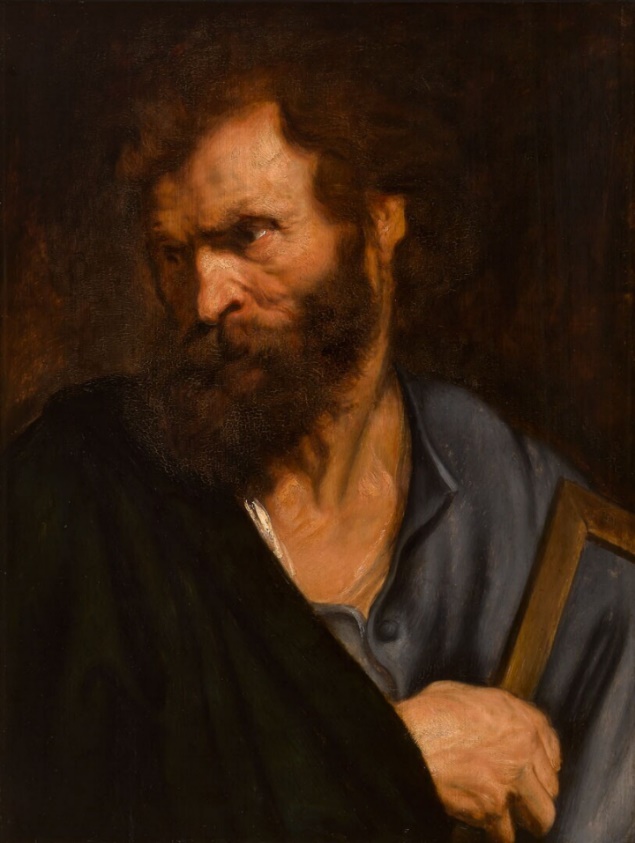|
Jude, Judas Thaddaeus, Thaddeus, Jude of James, Lebbaeus, or whatever you wish to call him, was an apostle and martyr from 1st century Galilee. The use of multiple names in the Bible makes it difficult to determine whether they are one person or several. Cross-referencing the four Gospels, most scholars have agreed that the Thaddaeus in Matthew and Mark is the same person as Judas in Luke and John. Matthew also refers to the apostle as Lebbaeus and Judas the Zealot, whereas Luke and the Acts of the Apostles record him as Judas, son of James. One certain thing, however, is this disciple should not be confused with Judas Iscariot, the betrayer of Jesus.
Not including Judas Iscariot, the name Judas or Jude is mentioned six times in the Bible. In Luke, both Judas son of James and Judas Iscariot are recorded in a list of the twelve disciples. The same is recorded in Acts, minus the latter, of course. Similar lists in Matthew and Mark, on the other hand, state his name as Thaddeus. It has been suggested this may have been a nickname. Thaddeus means “courageous of heart”. John makes an effort to differentiate between the similarly named disciples. “Then Judas (not Judas Iscariot) said, ‘But, Lord, why do you intend to show yourself to us and not to the world?’” (John 14:22) In response to this, Jesus says, “Anyone who loves me will obey my teaching. My Father will love them, and we will come to them and make our home with them. Anyone who does not love me will not obey my teaching. These words you hear are not my own; they belong to the Father who sent me… Peace I leave with you; my peace I give you. I do not give to you as the world gives. Do not let your hearts be troubled and do not be afraid.” (14:23-24, 27) There is debate as to whether Judas was the brother of Jesus, since Matthew 13:55 says, “Isn’t this the carpenter’s son? Isn’t his mother’s name Mary, and aren’t his brothers James, Joseph, Simon and Judas?” The same is said in the Gospel of Mark but there is no clarification as to whether this Judas was also the disciple. Protestant churches tend to believe they were different people, whereas Catholics usually argue the opposite. The author of the Book of Jude is also widely debated. The book begins with the author’s introduction: “Jude, a servant of Jesus Christ and a brother of James.” (Jude 1:1) We know from Matthew that both Judas and James were brothers of Jesus, but is Jude the same person? Also, we know Judas was the name of a disciple of Jesus, and therefore may identify himself as “a servant of Jesus Christ.” From this, it could be inferred that Judas/Thaddaeus, Judas the brother of Jesus and Jude the author are all one person, however, no one has been able to find solid proof. A collection of biographies compiled by Jacobus de Varagine in the 13th-century attempts to clarify the mixture of names used in the Gospels:
Jude’s life before becoming a disciple is unknown, however, over time, theories and ideas suggest he may have been a farmer by trade. Growing up in Galilee, Jude would probably have spoken both Greek and Aramaic, which would have come in useful when preaching to people of other areas. The 14th-century historian Nicephorus Callistus believed Jude was the bridegroom at the wedding at Cana recorded in the Gospel of John. This was the event that saw Jesus perform his first miracle. Tradition states Jude was martyred around 65 AD in Beirut. Although Beirut is now the capital of Lebanon, it was then part of the Roman Province of Syria. Abdias, the first bishop of Babylon, recorded Jude’s death in the Acts of Simon and Jude along with the death of fellow disciple, Simon the Zealot. It is thought the pair was killed with an axe, possibly beheaded. Many years after his death, Jude’s bones were brought to Rome where they were buried in the crypt of St Peter’s Basilica. His resting place became a popular destination for pilgrims, giving him the title “The Saint for the Hopeless and the Despaired”. He is also known as “The Patron Saint of the Impossible.” Shrines and churches have been erected all over the world in Jude’s honour. These can be found in Australia, Brazil, Sri Lanka, Cuba, India, Iran, the Philippines, New Zealand, the United Kingdom, the United States and Lebanon. The most recent shrine is the National Shrine of Saint Jude in Faversham, Kent, which was built in 1955. The Feast of St Jude is traditionally celebrated on 28th October. Just for fun, here is a list of the things and places that have Jude as their patron:
0 Comments
Your comment will be posted after it is approved.
Leave a Reply. |
©Copyright
We are happy for you to use any material found here, however, please acknowledge the source: www.gantshillurc.co.uk AuthorRev'd Martin Wheadon Archives
June 2024
Categories
All
|

 RSS Feed
RSS Feed